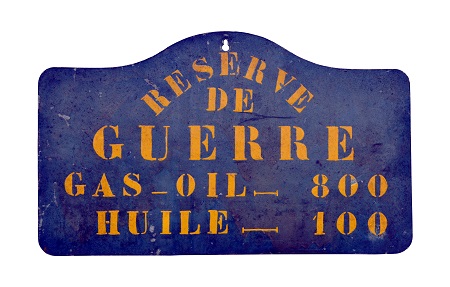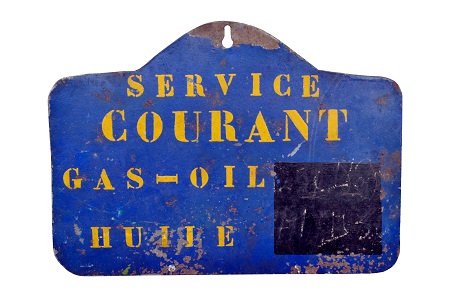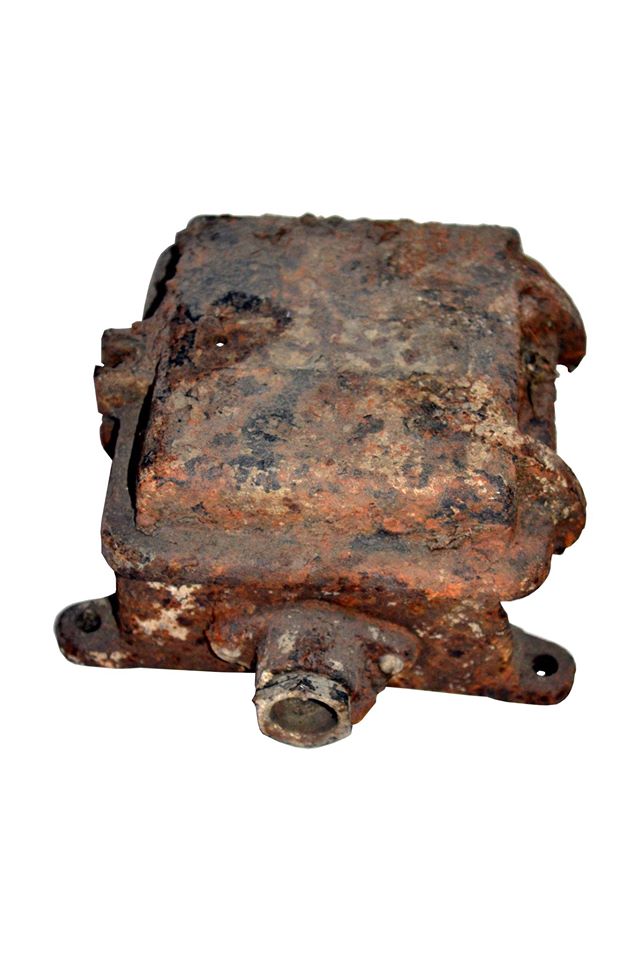The power plant of the Maginot Forts was referred to as the Usine. The word translates as 'factory', and is a cover-all word describing a place where something is produced. The principle of the Maginot was that it was intended to be a state-of-the-art set of fortifications, embracing the latest that was available in the modern technology of the time. The concept was, however, not one of technology for technology's sake, but for the purpose of reducing the reliance on manpower. When the French recovered the region of Alsace and the parts of Lorraine lost in the wake of the Franco-Prussian War, in 1918 much re-thinking had to be done about the advanced state of domestic utilities in the previously-occupied areas. Were you to live in a rural village in, for example, the region of the Ardèche then you would be unlikely to have been blessed with mains electricity at this time. Compare and contrast this with small villages in Alsace, which were all provided with mains electricity. So, it is important to realise that universal electricity was, for some in France, an exciting and new concept. It is worth noting that it was only under the German occupation between 1871 and 1918 that the city of Strasbourg was provided with modern sewers which replaced those installed in the Middle Ages!

Everything in a Maginot fort was run electrically. The power was generated at domestic power stations, then was transferred to heavily defended bunkers from where it was sent to the military's own dedicated (buried) supply. On reaching a fort, it was passed through an external step-down transformer prior to entering the actual fortress. Anyone reading this will already be asking the obvious question ... What becomes of this chain in the event of an interruption of supply? This is really easily answered; we have just described the electrical supply provisions for peacetime; double redundancy, at least, was built into every stage of the operation of a Maginot fort. Each major fortification had the means of generating its own electricity; where (for example) the power required was amply generated by two generators, then four would be installed. In times of conflict (an important note should be made here; this being defined by either the complete disruption of the external supply, or when the guns were in operation) the fort would operate entirely under its own self-generated power from the usine.

Everything in a Maginot fort was run electrically. The power was generated at domestic power stations, then was transferred to heavily defended bunkers from where it was sent to the military's own dedicated (buried) supply. On reaching a fort, it was passed through an external step-down transformer prior to entering the actual fortress. Anyone reading this will already be asking the obvious question ... What becomes of this chain in the event of an interruption of supply? This is really easily answered; we have just described the electrical supply provisions for peacetime; double redundancy, at least, was built into every stage of the operation of a Maginot fort. Each major fortification had the means of generating its own electricity; where (for example) the power required was amply generated by two generators, then four would be installed. In times of conflict (an important note should be made here; this being defined by either the complete disruption of the external supply, or when the guns were in operation) the fort would operate entirely under its own self-generated power from the usine.

 Sign from a casemate. This was the main sign from the generator room of a casemate. This indicated the minimum levels of the oil and diesel required in the event of an attack.
Sign from a casemate. This was the main sign from the generator room of a casemate. This indicated the minimum levels of the oil and diesel required in the event of an attack.
Sign from a casemate. This was located in the generator room of a casemate. It was for the purpose of keeping an active watch on the state of the oil and diesel supplies.

Brass Information Plaque. This was fitted as part of the fort's main lighting circuit. Such plates were intended for generators or transformers; the 25-ampere rating shows this to have been right at the core of the usine. Alsthom produced this in one of their factories; the location given on the plate refers to their head office in Paris.

Internal Sub Sation Box Label. Again, from the lighting circuit; it was placed on the front of a metal box which contained the fuses.

Box From Internal Sub-Station. Fuse box cover from internal substation, once containing a set of fuses. Originally it would have been labelled, (see above).

Brass Plaque NEU. NEU is still based in Lille. They specialise in air filtration. This plaque would have been attached to part of the air filtration system. While the filters were produced by other companies, the means of movement for the filtered air was handled by equipment made by NEU.
